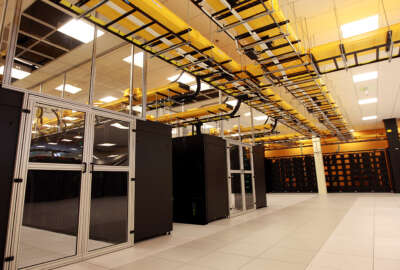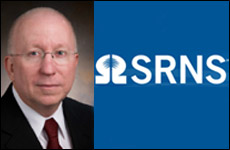
New Energy CIO eyes expansion of cyber, cloud efforts
Max Everett, the Energy Department's chief information officer, said the agency can help secure and improve the technology behind the Internet of Things.
The Energy Department is relying on its network of labs to develop and share cutting-edge cyber tools to better secure almost every industry.
Take the work by Lawrence Berkley National Laboratory, which is helping the energy sector get a leg up on cyber attackers.
Jennifer Silk, a senior advisor for cybersecurity at DoE, said Berkley developed a cyber tool called “BRO,” short for Big Brother, an intrusion detection tool focused on network analysis.
“It’s now out and available, and widely used by major technology companies like Amazon, Apple and CISCO use it, as well as many of our federal partners,” Silk said on Ask the CIO.
Energy is one of those agencies that use BRO to protect its networks.
Another project is at the Savannah River National Laboratory, where they are using low-orbit satellites and random number streams to validate a user’s position to limit access to networks and data.
“That makes it a lot easier to manage who is accessing their networks. Their approach really could change the way we prevent cyber attacks, particularly in remote locations. Most of the grid is located in remote locations,” she said. “We also have a very collaborative research and development project set up here, where industry partners, universities and our labs all partner together on projects to bring their perspectives to it and make sure the projects they are working on are working toward filling the gaps and priorities needs the ultimate owners would need.”
The research and development efforts by the national labs are part of a broader approach by DoE to address the ever-increasing cyber challenges.
Max Everett, Energy’s chief information officer, said the labs are doing a mix of pure research and focused initiatives in the tech transfer and commercialization programs.

“I think you will see an increased focus on them looking to find things that can quickly come to market, or the underlying technologies can be brought out to the private sector so they can find the next level of opportunity,” Everett said. “I think a bigger picture for cybersecurity as well, even for our labs, even for the ones who don’t formally do cybersecurity, all of our labs in different ways have a deep expertise in operational technology. We are moving into a world of ubiquitous sensors. We are moving into a world where virtually everything has some type of general-purpose computing ability in it. All of our labs have a deep expertise there. They are really building the models for managing and securing that next generation of technology. Part of our goal is to make sure we bring in the private sector and other departments and agencies across certainly the energy sector and even other sectors to better understand the capabilities the labs are developing.”
One of the ways DoE’s labs are building those models to improve the future technology infrastructure is through its supercomputer program.
Silk said DoE has five of the 10 fastest supercomputers in the world, including the Titan system at Oak Ridge National Lab — the fourth fastest in the world.
“The next milestone in this area is exascale. Exascale computing is a billion, billion calculations per second. We are leading the U.S. effort in the critical race to exascale computing. These systems will be 50 times faster than today’s most powerful computers,” she said. “The benefits we will see from that will be numerous. They will provide more realistic simulations for complex processes, and benefit industries all across the country. It really helps create a space where we can go after the most pressing challenges.”
Silk said the goal is to deliver exascale capability by 2021.
Beyond critical cyber and high-performance computing initiatives, Everett also is focusing on modernizing the department’s infrastructure by moving to the cloud.
“We’ve got 97 sites and labs across 26 states, so for us, the concept of a decentralized cloud model for a lot of our commodity computing really works very well,” he said. “Because we’ve got capability built day after day at the labs, we’ve got a lot of partners and opportunities to bring the newest things and basically make ourselves into guinea pigs to test some of the new tools and some of the new capabilities the labs are developing every day.”
Copyright © 2025 Federal News Network. All rights reserved. This website is not intended for users located within the European Economic Area.
Jason Miller is executive editor of Federal News Network and directs news coverage on the people, policy and programs of the federal government.
Follow @jmillerWFED







